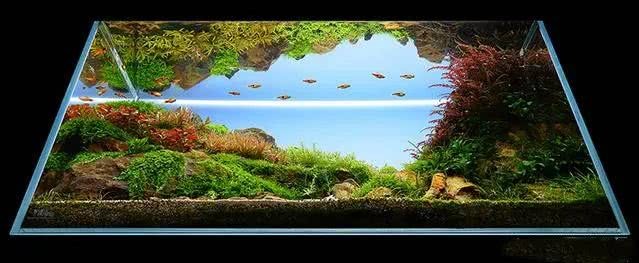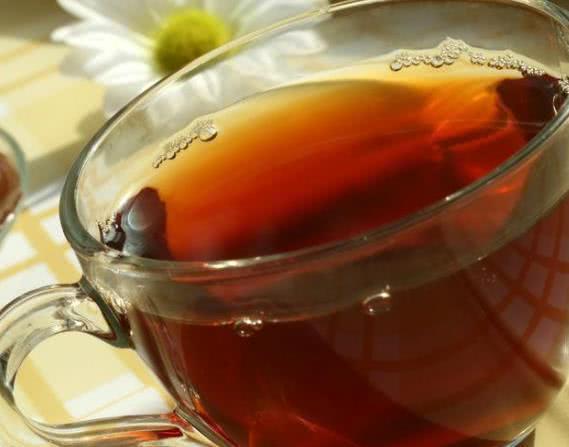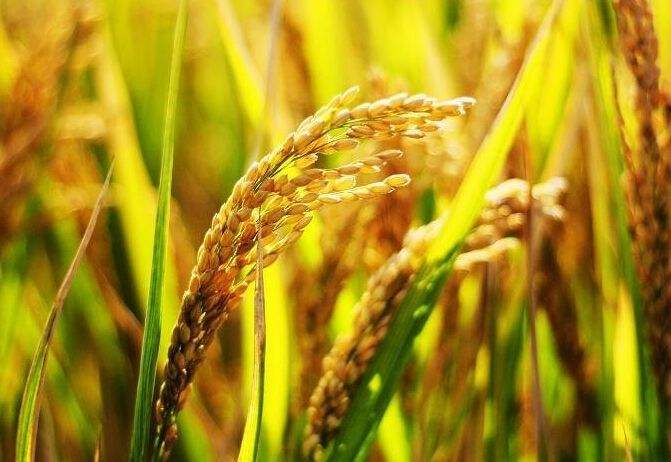Sharing the full record of the production process of the award-winning work "Spring" in the Landscape Competition

Reproduced from Baijia account: Lao Zhang fishing
IIAC Water Plant Landscape Competition, ranked 21st, work 'Spring Spring'.
Hardware introduction:
Aquarium: Yi Ding 90x45x45 Super White cylinder
Lamps and lanterns: medium blue multispectral LED lamps and lanterns x2 (light on 12H per day)
Filtration equipment: il MK800 barrel filter, CAL Efflux F3 glass outlet, VIV glass deoiling film
CO2 equipment: ISTA high pressure aluminum bottle, ISTA single meter solenoid valve, ISTA turbine is a high efficiency CO2 dissolver (CO2 with light switch)
Temperature control equipment: ISTA 300W external heater
Material introduction:
Silicon sand bed (with buried root fertilizer) and stone is shale.
Introduction of aquatic plants: new big pearl grass, African red willow, red cloves, Java mousse, pocket banyan, pearl grass, green court, scarab, needle crown.
Fish only introduction: Golden Triangle, tricolor Mickey Mouse.
Algae removal organisms: big river algae shrimp, long rice shrimp (gun shrimp), black shell shrimp, monkey flying fox, elf.
Fertilizer: ISTA red water grass liquid fertilizer, TBS root fertilizer ingot
The original composition of this work was inspired by a photo of Huadong Longgu on the Internet, hoping to enhance the sense of distance and proximity of the whole scene, so it deliberately arranged a close-up effect on the right, and then made use of the layout of materials and aquatic plants on the left. gradually extend the scene to the middle and rear to enhance the visual depth.
At the beginning, there was a little trouble in the stone arrangement. To show the close-up part on the right, you need a towering stone, and it is best if the stone height is close to the water surface, so as to enhance the sense of 'proximity'. But now I find that there is no stone of sufficient size on hand, what should I do?
No problem, it is to stack the stones to a sufficient height, and then use the appropriate arrangement of aquatic plants to cover up the traces of "stacking".
Look at the green court and needle crowns just bought at this time are all aquatic leaves, but the moderator has never cared about this, because they will soon turn into the leaves in the water.
The scarab in the right foreground is glued to it with ISTA glue.
Although this work did not draw a sketch at the beginning, after referring to the photos, I already had a clear idea about the layout and development direction of aquatic plants in the future, so I used PS to draw a reference map to see whether there was coordination between aquatic plants and stones, and whether there was any need to make adjustments.
In fact, we can see from this picture that I very much hope that aquatic plants can show bright colors, such as red, yellow, green and even coffee, so that the whole landscape can be more colorful, so at the beginning, I used three medium-blue multi-spectral LED lamps and lanterns to show a strong light environment.
After setting up the tank for a month, the water plants grew smoothly as expected, and they did not encounter any algae problems, because this is a competition work. In order to avoid the outbreak of algae and affect the whole progress, a more conservative strategy was still adopted in fertilization. When the fertilizer effect of the initial root fertilizer was still there, liquid fertilizer was not added temporarily, and liquid fertilizer was not added gradually until about a month after setting up the tank.
(the picture above is a demonstration of the IIAC water plant landscaping special training lecture.)
During this period, I attended a landscaping lecture, in which the performance of the sense of nature was mentioned. At this time, I began to hesitate whether the work should continue to maintain the bright color style, and the red lilac should make it bright red. Or would you like a more natural orange? Do you want the needle crown red or green?
Struggle ~ ~
Set up for two months. Huh? Why does it look the same as it did a month ago? In fact, the layout of aquatic plants in this scene can only develop towards' density', not 'height'. Even if it has stems and grass, it cannot be allowed to grow too tall, otherwise it will excessively block the background stone and lose its sense of hierarchy.
Therefore, water plants with stems must be pruned more frequently, and they must not be cut again when they top the water.
In addition, in order to make the foreground needle crown look low, cut off all the leaves and let them grow again, so that the height of the new leaves will be reduced, which is more in line with the needs of this scene.
But at the moment, the focus is not on this, but on the pearl grass in the left rear! These pearl grasses are freshly glued.
Pearl grass I think most players will choose to implant it into the bottom bed, but in fact, it can also use instant glue to stick to the hard landscape, even if the root is not implanted in the bottom bed, as long as there is a proper liquid fertilizer to provide nutrients, it can still maintain a good grass condition. (this work adopts ISTA red water plant liquid fertilizer one month after setting up.)
The reason why pearl grass does not stick to it until now is that it grows very fast. if it is implanted as soon as it is set up, its progress will be much ahead of other aquatic plants, but it will be very difficult to reach the ideal state and take pictures at the same time. That's why I decided to replant it a month before the scene.
This is the envisioned picture of the scene drawn by the PS software, and the layout of the small details begins at this time. For example, the pearl grass in the background is expected to be trimmed into the slope in the picture, and smaller triangular stones are arranged in the pearl grass to make the scenery in the background appear more 'distant'.
Coincidentally, the left view of the P picture of the red clove water plant is a photo before use, and at that time these red cloves could not appear bright red because they were shaded, but they felt more natural and seemed more suitable for this work, so I immediately decided to take down one of the medium blue multi-spectral LED lamps and lanterns, leaving only two lamps to reduce the light intensity, in the hope that the next red cloves could turn to a less red orange.
But people are not as good as heaven. I expected to be able to shoot the scene in three months, but I happened to go abroad to play at this time. No, I went abroad to watch the leprechaun show, but I missed a good time to shoot a scene, so I had to prune the stemmed water plants and wait for the next opportunity.
Although the completion of the scene has been postponed, it is not entirely a bad thing. The density of stem grass that is pruned once more actually increases again, and the aquatic plants seem to be more abundant.
The layout of the river in the middle began only a few days before the scene was photographed, which is a bit tricky, but it can save a lot of trouble in arrangement.
Although there is a slight delay in the schedule, fortunately, the final result of the scene is quite satisfactory, and the shooting of the scene is also very smooth, which is mainly due to the Golden Triangle Lamp, which is a super group tour.
I wonder if the officials have noticed the corner of the left rear scene. Usually there will be a white (or black) reflection of silicon Likon at the corner of the fish tank, but the 45-degree adhesive surface of Yi Ding will not see silicon Likon at all. It looks like a transparent glass and looks surprisingly good-looking.
Luckily, this work was favored by IIAC judges and ranked 21st out of 803 entries.
Digression: in fact, it is annoying to give a name to the landscape works of aquatic plants. I am very lazy in this respect. I always find a name to plug it casually, such as WISH and FOCUS. In addition, the word 'spring' is the most commonly used.
No matter what style of works, he can be called Chun. there is no sense of disobedience in the name of aquatic plants, so it will be called Chun once a year. No, there will be a work called Chun every year, and this year is no exception. Maybe it will continue to be called Chun next year.
There are surprises here.
Click on the original text to buy now
- Prev

Three kinds of flowers like to drink tea once every 10 days. The leaves are green and grow vigorously.
Many friends like to make tea at home, and then many flowers at home can also be watered with tea, such as overnight tea, after overnight fermentation, the water quality has become slightly sour, used to water slightly acidic flowers and plants.
- Next

What will be the result if the protective price of rice rises from 1.3 yuan to 2.6 yuan per jin?
Abstract: what will be the result if the minimum purchase price of rice in China goes from 1.3 to 2.6 yuan per jin? What will happen if the protective price of rice rises from 1.3 yuan per jin to 2.6 yuan per jin? The scientific development of agriculture believes that if the above assumptions.
Related
- Wuhan Hospital Iron Tree Blooming Result Was Instantly Frightened by the Gardener Master
- Which variety of camellia is the most fragrant and best? Which one do you like best?
- What is the small blue coat, the breeding methods and matters needing attention of the succulent plant
- Dormancy time and maintenance management of succulent plants during dormancy
- Minas succulent how to raise, Minas succulent plant pictures
- What are the varieties of winter succulent plants
- How to raise succulent plants in twelve rolls? let's take a look at some experience of breeding twelve rolls.
- Attention should be paid to water control for succulent plants during dormant period (winter and summer)
- Watering experience of twelve rolls of succulent plants
- Techniques for fertilizing succulent plants. An article will let you know how to fertilize succulent plants.

